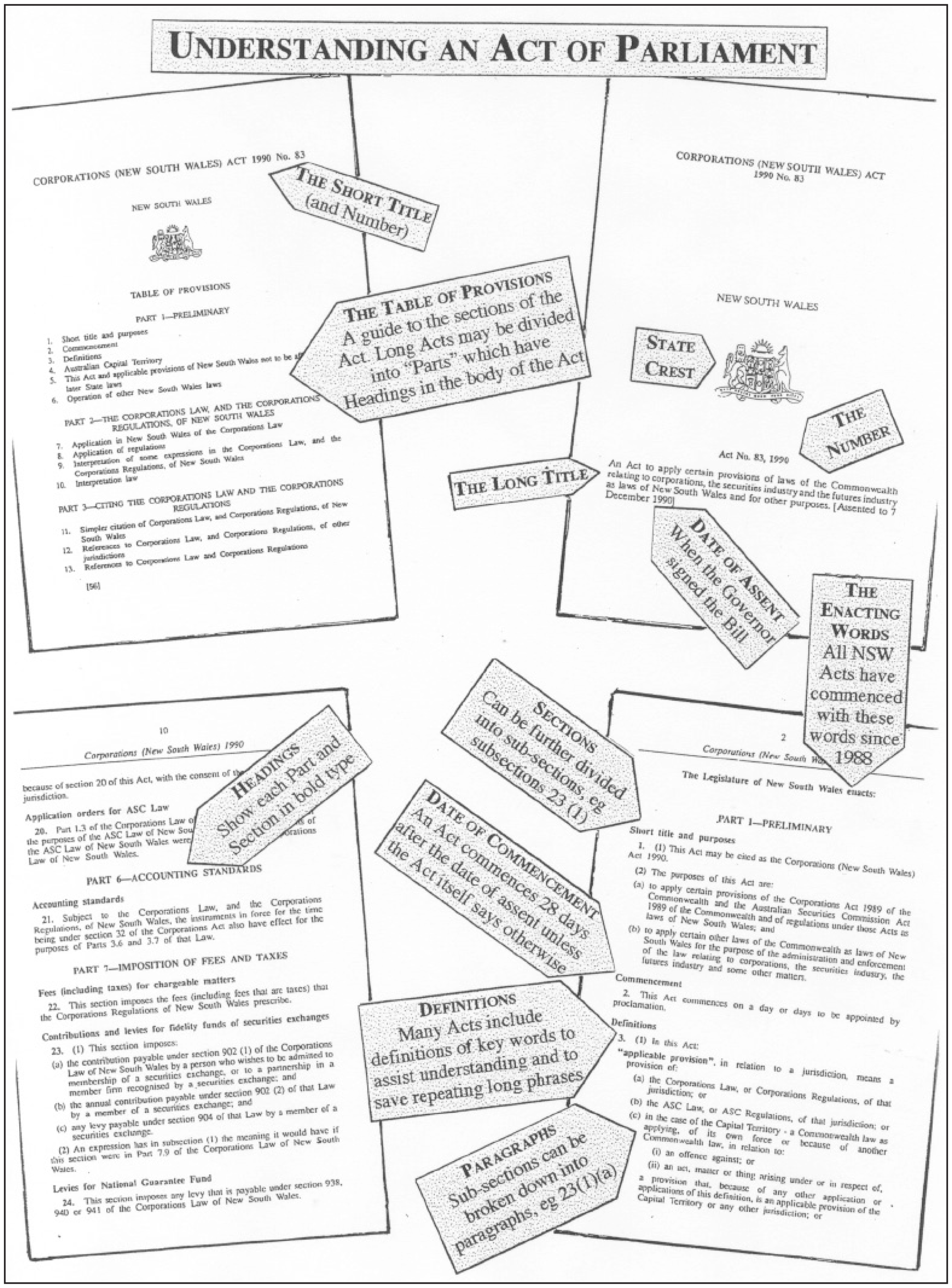Acts of Parliament are formal documents which may seem difficult to understand, but you do not have to be a lawyer to understand how they work. Acts contain set elements and generally follow an established form. Acts of Parliament often give the Governor, on the advice of the Executive Council (Cabinet), the right to make rules, regulations, by-laws and ordinances under a particular Act. These are called
Statutory Rules and Instruments and must be consistent with the terms of the Act but they are not in the Act itself.
Elements of an Act
Number: New South Wales Acts of Parliament are numbered in chronological order, commencing with the number 1, for each calendar year.
Short Title / Long Title: Each Act has both. The
Long Title sets out the subject, scope and purpose of the Act. It is important because it can be used in Court to interpret the Act. The
Short Title is specified in the Act and is used for convenience.
Preamble: This is a preliminary statement explaining why the legislation was thought desirable. They are rarely used in modern Acts. However, modern Acts usually begin with a Table of Provisions (a kind of index) which is an aid to reading but is not formally considered by Parliament like the rest of the Bill.
Headings and Sections: Acts are set out as a series of statements (or sections), divided and subdivided clearly with each subdivision easily identified by its own number, e.g. Part 5, Section 23, sub-section (1), paragraph (a) – this would usually be abbreviated as Pt.5 s.23(1) (a).
Schedules:
Many Acts have schedules attached at the end which generally add more details (such as maps or fees), give examples of forms or sets of rules to be used under the Act, or list sections of other Acts amended by this one.

